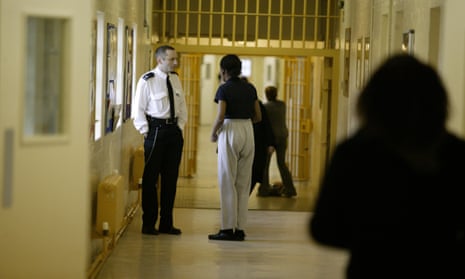Ministers have made little progress developing alternatives to custodial sentences for women, MPs have concluded, amid official predictions that the female prison population may rise by a third in the next three years.
The Conservative-led justice select committee said “there is yet to be any clear evidence” that women are being diverted away from jail despite promises to develop other methods of punishment and rehabilitation.
In a report released today, the cross-party committee said the government has also failed to address the addiction, mental health and trauma issues facing women who enter the prison system.
The report calls on the Ministry of Justice (MoJ) to ensure that strategies developed to combat problems in the system are adequately funded, rolled out efficiently and monitored for performance to create meaningful change.
Bob Neill, the Conservative chair of the committee, said: “It is disappointing that there is yet to be significant tangible change. The 2018 female offender strategy marked an important step in recognising the needs of women in the criminal justice system, but more needs to be done to understand whether it is targeting the right areas and having a meaningful impact.”
Women in the justice system have distinct needs and worse outcomes than men, previous official reports have found. They are more likely than men to have specific vulnerabilities that drive offending, including experiences of trauma and abuse, and pose less of a serious risk to the public.
A key objective of the government’s female offender strategy, which was released in 2018, is to have fewer women in prison. Overall numbers have fallen, from 3,958 in February 2017 to 3,219 in July 2022. However, according to MoJ predictions first published in November, the adult female prison population is expected to be 4,300 in July 2025, up by a third from 3,170 in July 2021.
Analysts at the MoJ calculated that the recruitment of an extra 20,000 police officers, a potential post-pandemic crime rise and longer jail sentences will see prisoner numbers rise.
This comes on top of a backlog of 60,000 crown court cases that has grown by 20,000 during the pandemic.
The government has indicated that it intends to improve out of court disposals, which are alternatives to deal proportionately with low-level offending without recourse to the courts.
However, MPs said there is yet to be any clear evidence that more women are being diverted away from custody through this route.
“The government should set out what funding it plans to put in place to support the development of women-specific pathways to support alternatives to prison sentences. It should also set out a timeframe for when it expects these services to be in operation,” the report said.
Today’s report echoes conclusions from the National Audit Office in January, which found that the MoJ did not set any programme goals or targets, which limited its ability to assess required costs or value for money.
Commenting on the report, Peter Dawson, director of the Prison Reform Trust, said it was a disappointing read. “The only substantial investment the government has promised since its female offender strategy was published in 2018 is £150m to build 500 additional prison places for women,” he said. “But the strategy’s declared aim was to reduce the number of women in custody, not increase it.
“If it wants to be taken seriously, the government must now invest in supporting women in the community, not building more prison cells for them.”
A Ministry of Justice spokesperson said: “Custody is used as a last resort for women and since we launched our female offender strategy in 2018, the number entering prison has fallen by nearly a third.”










